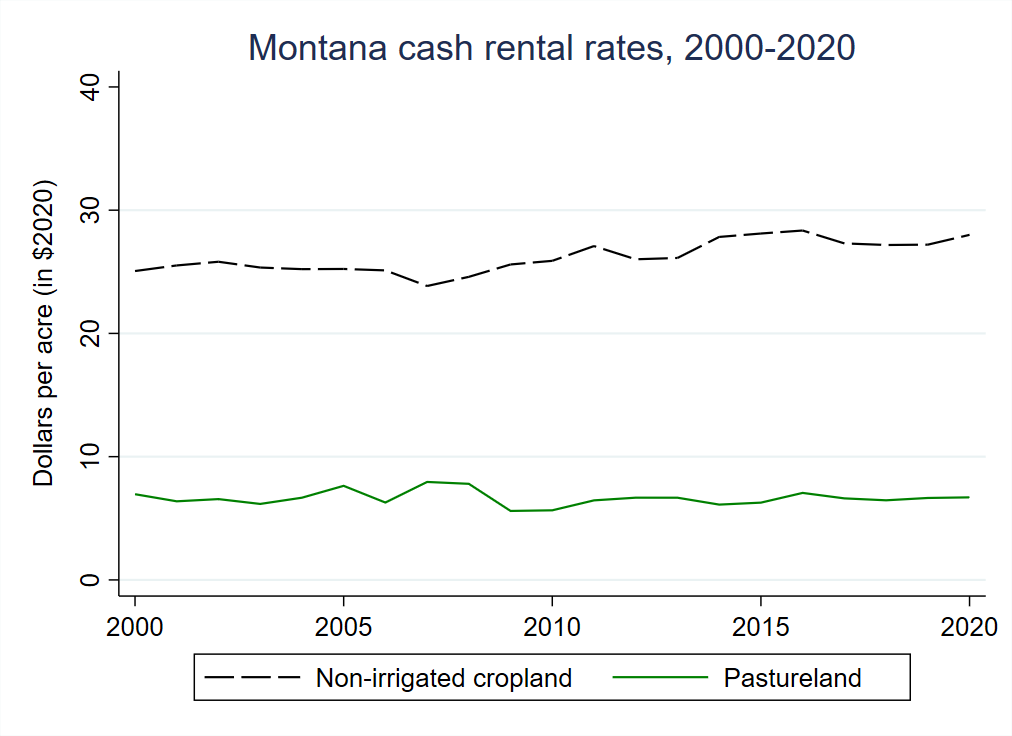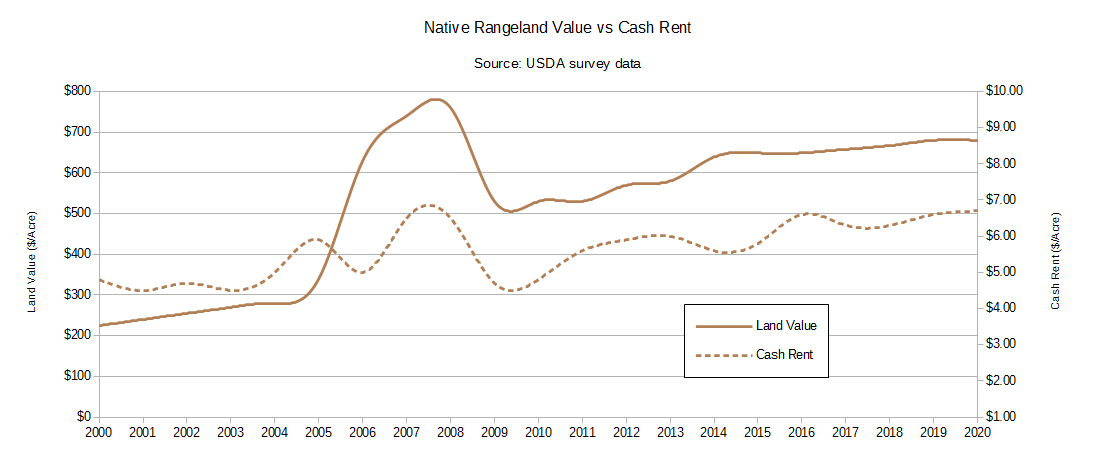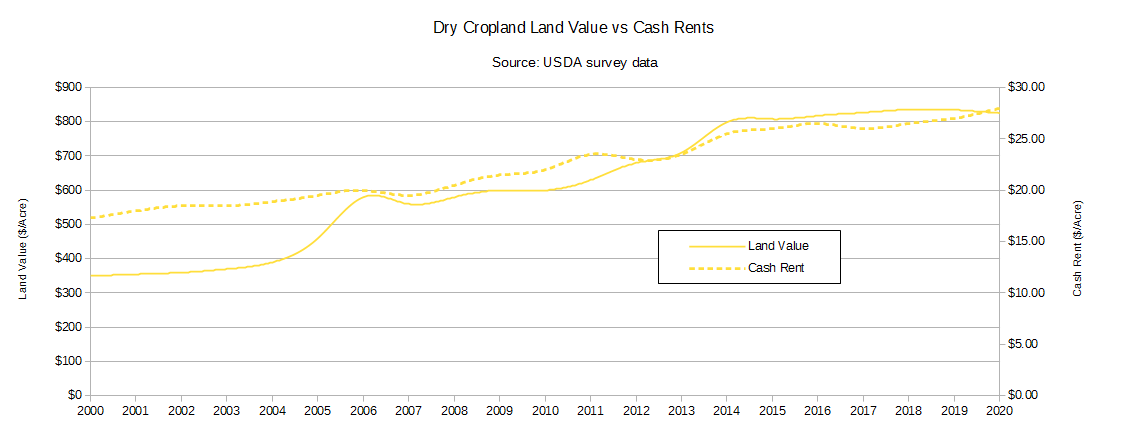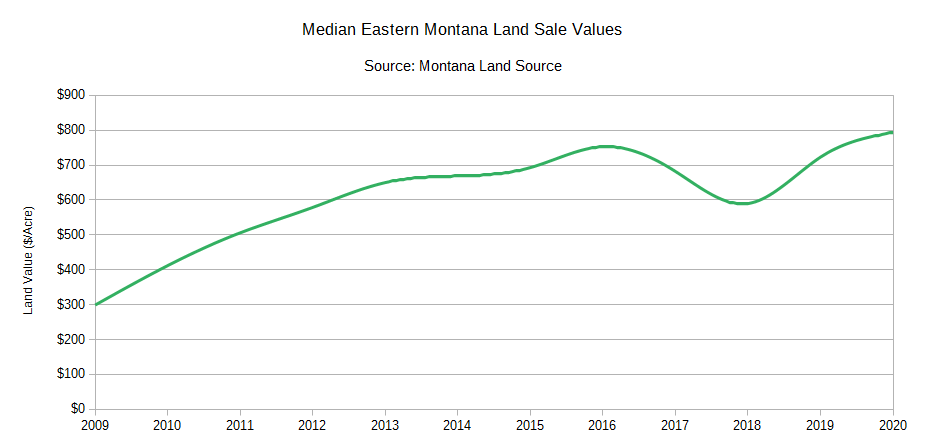
AgEconMT.com, the outreach website for the Montana State University - Department of Agricultural Economics department, recently published a post summarizing and recapping USDA cash rent survey data for Montana.
The data shows steady ag land cash rents since 2000, which is in sharp contrast to land value appreciation over the same period. This highlights the ongoing decoupling of income potential on Montana agricultural lands from land values. In the past, the dominant highest and best use on rural land in Montana was agricultural production, and land values were based on that potential. But for decades now, highest and best use has been transitioning to investment value, with influence from other factors such as recreation. Appreciation in land values have been outstripping annual production income potential, and driving land values.
The MSU analysis shows that cash rental rates, adjusted for inflation, have been steady since 2000.

When cash rental rates and land values for dry cropland and native rangeland from the same USDA survey data are put into charts, the relative rates of change over the past 20 years is shown. In these charts, $/acre land values are on the left axis, and $/acre cash rental rates are on the right axis. For native rangeland, land values appreciated at a rate of 5.69% between 2000 and 2020, where cash rents only grew 1.68%.

For non-irrigated, or dry cropland, land values appreciated at 4.38% annually where cash rent grew 2.44% between 2000 and 2020.

The USDA survey data for cash rental rates is likely fairly accurate, as the survey participants are likely involved inactive land leasing and rental agreements. However, the accuracy of the land values data is more suspect. Montana is a non-disclosure state, and like all non industry professionals, the survey participants have limited access to actual land transaction data. The survey simple tracks the opinions or perceptions of land owners and managers of land values, not actual values. In general, the USDA land value data is considered conservative, or to be a low indication of land value.
Actual land sales data from Montana Land Source for eastern Montana, for all land types, shows 9.28% annual appreciation between 2009 and 2020. Eastern Montana has more agricultural lands, whereas western Montana has more recreational and development lands.

The reality is that agricultural lands in Montana have two distinct aspects of value, that can be independent of each other. One is the annual income potential, and the other is the appreciation or investment potential over time. See our blog post from May 2020 called "Ranching Versus Land Investment."
